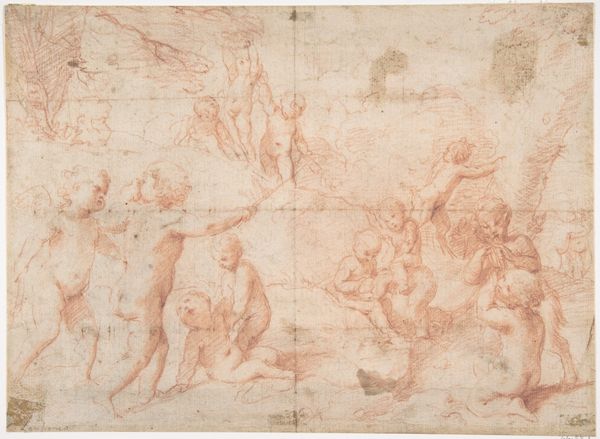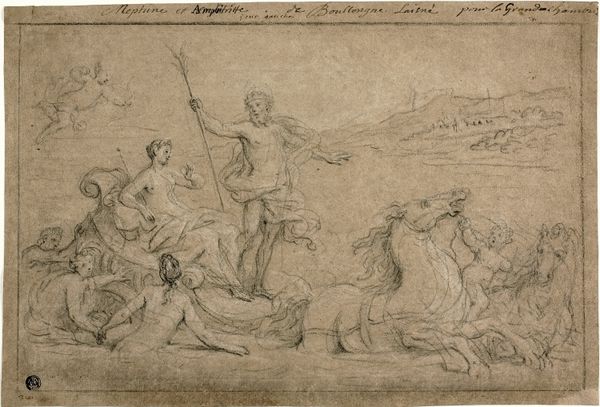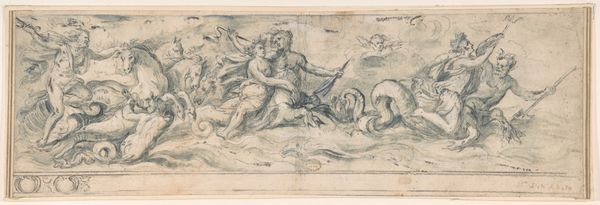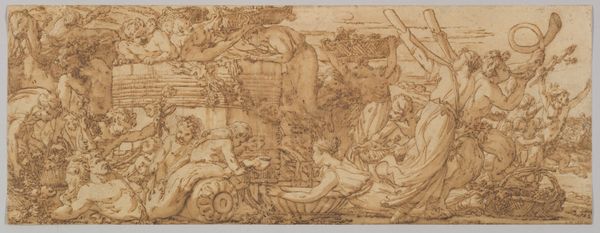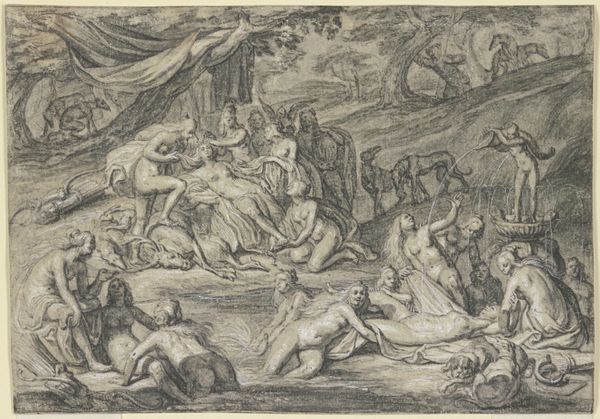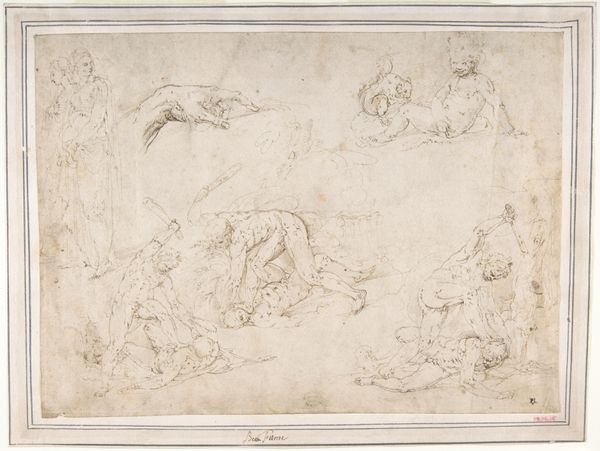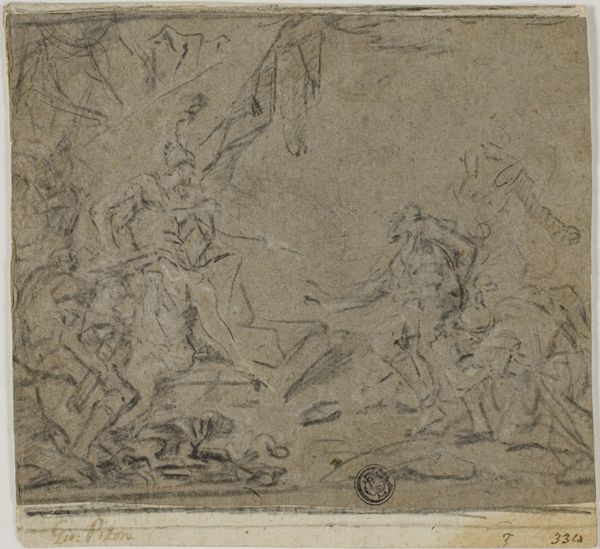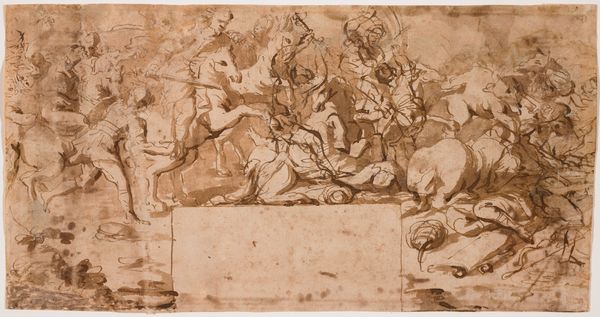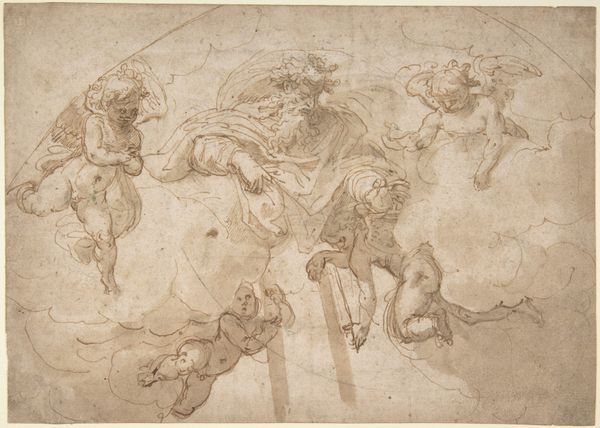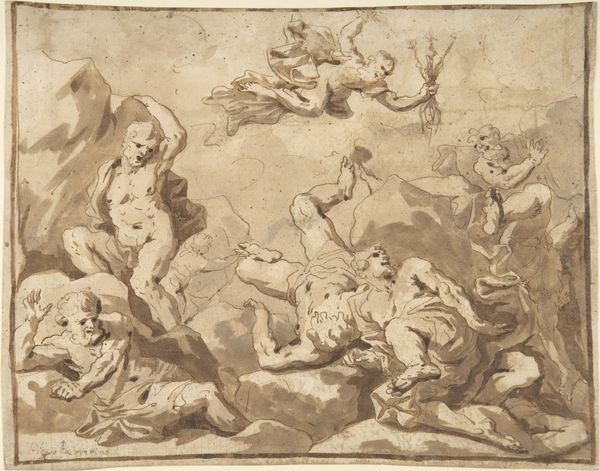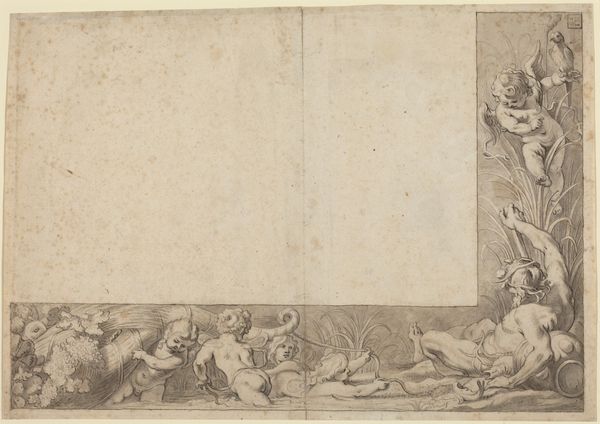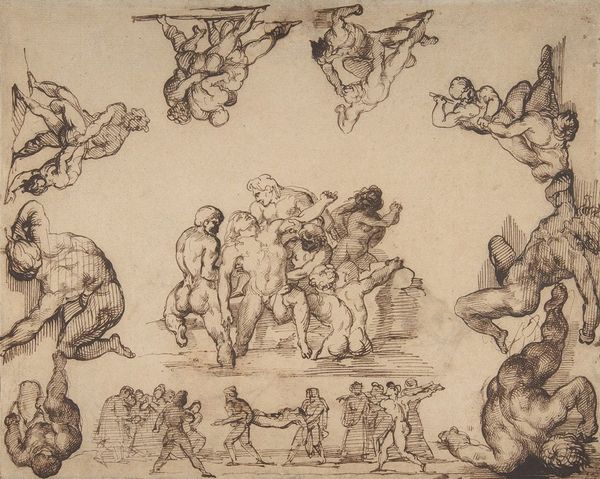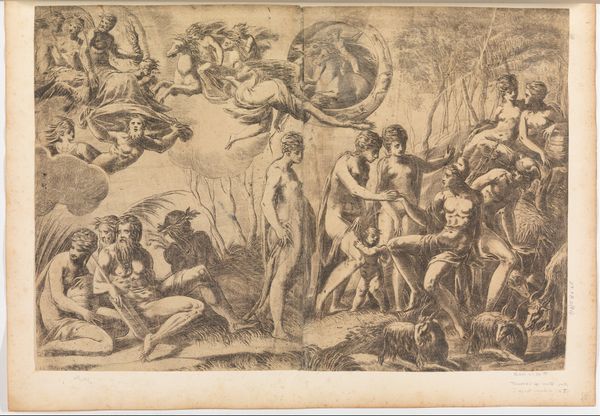
drawing, ink, pen
#
portrait
#
drawing
#
baroque
#
ink painting
#
figuration
#
ink
#
pen
#
italian-renaissance
#
angel
Dimensions: 8 1/8 x 12 1/8in. (20.6 x 30.8cm)
Copyright: Public Domain
Editor: This is Ludovico Lana's "Study for Ex-voto Picture," made sometime between 1597 and 1646, using pen and ink. The ethereal figures hovering above a landscape create a compelling scene. What stands out to you? Curator: Considering its creation was likely within a specific workshop setting, I'm interested in the labor involved in this seemingly preliminary drawing. The visible pen strokes and the iterative nature of a 'study' suggest a collaborative process. Was Lana perhaps directing apprentices or other artists in realizing a larger, possibly more lavish, ex-voto painting? The material economy surrounding religious art during this period is quite fascinating. Editor: So, you’re saying it’s less about the spiritual message and more about how it was actually made and by whom? Curator: Precisely. Consider the patronage system. Who commissioned this piece, and what was the socio-economic status of the individuals represented in the lower portion of the drawing? The very act of commissioning such a work signifies an investment – a material transaction interwoven with faith. Also, look at the angel’s drapery; a real concern for its visual presence using light and shadow. This might show knowledge of different fabric treatments in a real-world atelier, and it reminds us that even idealized forms take on earthly characteristics because of the materials used. Editor: That’s a really interesting way to see it. I usually focus on the symbolism, but now I'm curious about the paper itself – where it was sourced, the type of ink. Did these materials carry a certain status, contributing to the overall message of the ex-voto? Curator: Exactly! The materiality speaks volumes. It moves our focus to the concrete aspects of art making – labor, consumption, and the exchange of resources – opening avenues for understanding the cultural and historical forces at play. Editor: Thanks! Thinking about the work this way shifts my perspective on Renaissance art quite significantly.
Comments
No comments
Be the first to comment and join the conversation on the ultimate creative platform.
